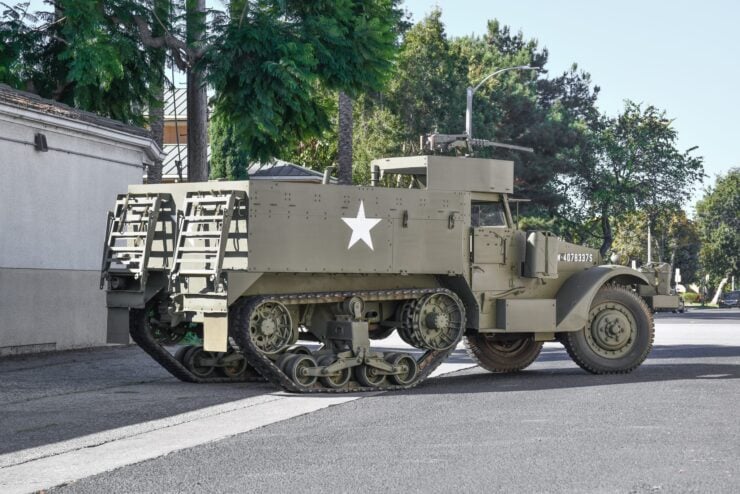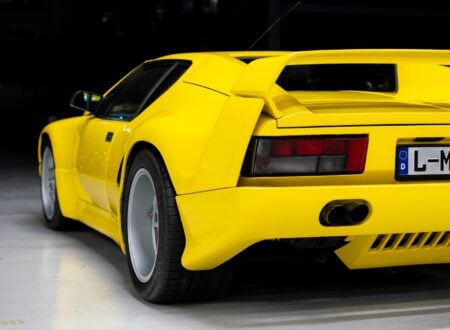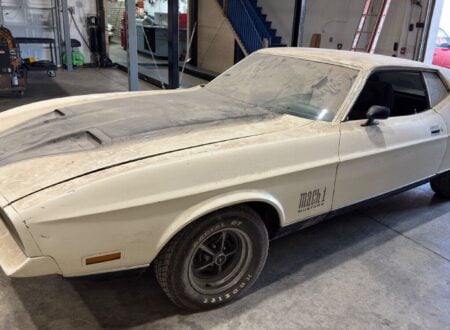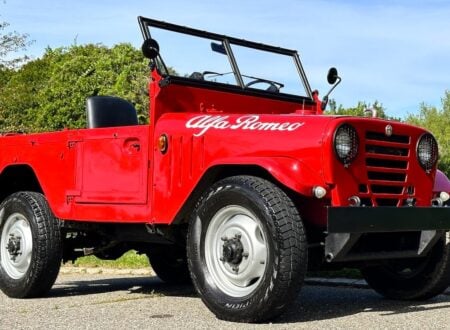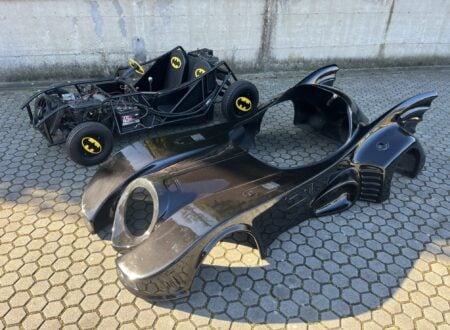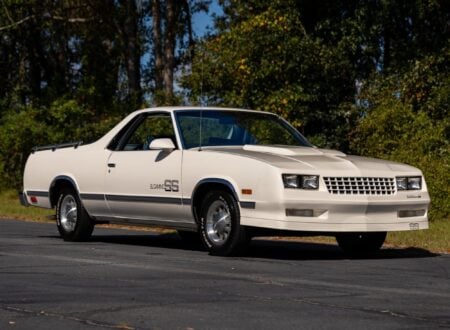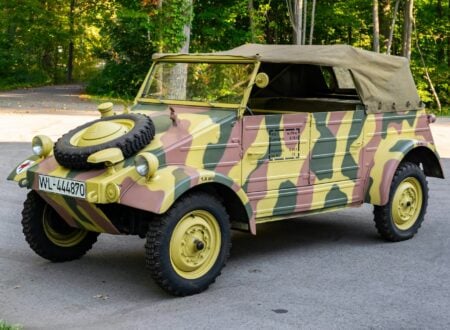This is a White M2 Half-Track, it was built during World War II by the White Motor Company and it was likely used as an artillery tractor, a reconnaissance vehicle, or assigned to a machine gun squad.
The “Half-Track” name comes from the fact that the rear wheels of the truck are replaced with tank-like tracks, though the vehicle retains the front wheels for steering. Vehicles of this type were found to be far superior in boggy, muddy, and snowy conditions compared to their 4×4 and 6×6 counterparts.
Fast Facts – The White M2 Half-Track
- The concept that would become the White M2 Half-Track was originally evaluated by the US Army Ordnance Department based on the success of the French Citroën-Kégresse half-track vehicles which had proven remarkably adept at handling deep mud and snow.
- The first prototypes of the M2 Half-Track were built by the Firestone Tire and Rubber Company, and the production versions were built by the White Motor Company from 1940 onwards. A total of approximately 13,500 examples would be made over the course of WWII, and some remained in military service in Argentina until 2006.
- In order to reduce costs and accelerate development time, the M2 Half-Track was built using the pre-existing rear bogie assembly of the T9 Half-Track truck and the front end of the M3 Scout Car. After testing it was determined that the vehicle would need a more powerful engine, and so the 386 cubic inch (6.33 liter) White 160AX inline-six gasoline engine was used.
- The M2 hands originally been intended for use as an artillery tractor however it quickly found use in a multitude of roles, proving popular with reconnaissance units, machine gun squads, and for armored personnel carrier duties.
The White M2 Half-Track
The vehicle that would become the White M2 Half-Track was developed rapidly before the outbreak of WWII, when he dark clouds of war were simultaneously descending over Europe and Asia, and it was becoming ever more clear to U.S. military command that conflict was all but inevitable.
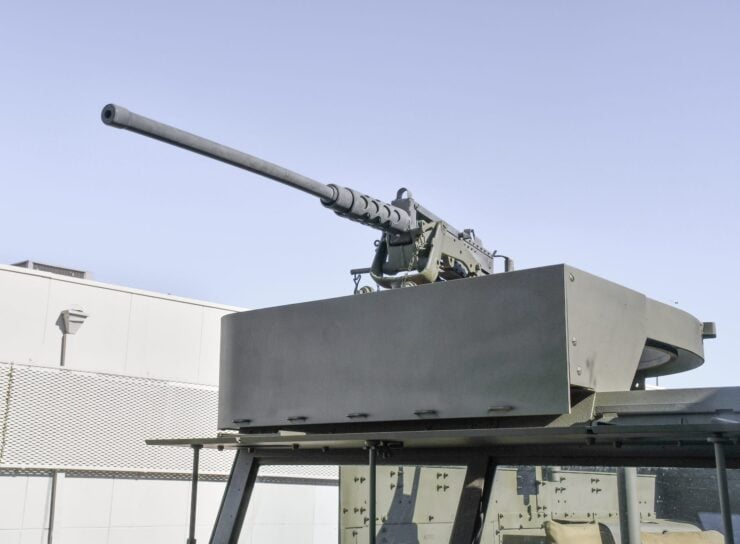

It hadn’t gone unnoticed in the United States that the French-designed French Citroën-Kégresse half-track vehicles had been outperforming their wheeled counterparts in operations that took place in deep mud and snow.
The tracked rear end of the Citroën-Kégresse was able to navigate almost any terrain it was confronted with, and it made an unstoppable artillery tractor.
Initial prototypes of the US answer to the Citroën-Kégresse were developed and built by the Firestone Tire and Rubber Company in the late 1930s using the rear bogie assembly of the pre-existing T9 Half-Track truck and the front end of the M3 Scout Car.
These early prototypes proved underpowered, and so the 386 cubic inch (6.33 liter) White 160AX inline-six gasoline engine was fitted which vastly improved performance. Contracts to build the M2 were assigned to Autocar, White, and Diamond T, with the White Motor Company producing the majority.
A number of configurations of the M2 were developed, the initial plan had been to use the vehicle as an artillery tractor however it quickly proved capable of fulfilling a number of other roles, and as such many were assigned for reconnaissance duties, machine gun squads, and to be used as armored personnel carriers.
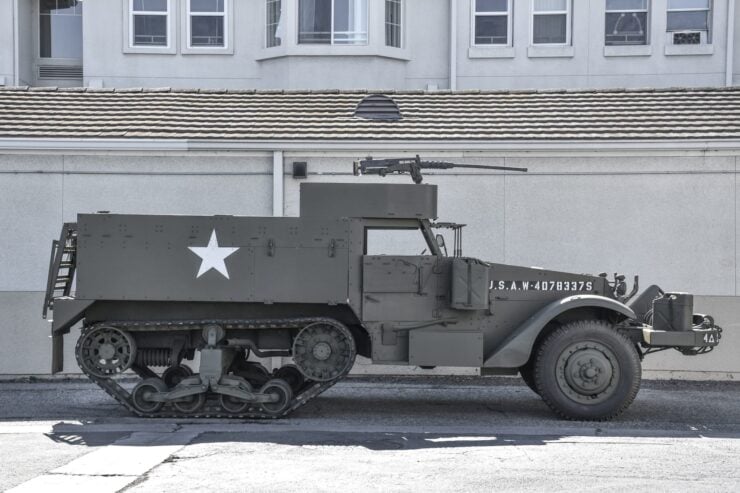

The final production specification of the M2 Half-Track was powered by the aforementioned White 6.33 liter straight-six which was mated to a four-speed manual gearbox and a dual-range transfer case sending power to the tracked rear end and to the two front wheels.
The front wheels steered the vehicle as per usual, and most examples of the M2 had a front winch as well as a .50 caliber M2 Browning heavy machine gun mounted atop the driver cab.
Approximately 13,500 examples of the M2 Half-Track were built in total across the production run. Initially all were used by the United States however a number were sent to the United Kingdom and to the Soviet Union under the Lend Lease agreement.
Later the M2 should be adopted by almost half a dozen other militaries around the world, from Argentina and Brazil to Vietnam and Israel. The final operational examples of the vehicle would remain in service all the way through until 2006 in Argentina.
A relatively small number of M2 Half-Tracks survive today, many were sold off for scrap metal value, and other slowly rusted away in forgotten corners of junkyards. Those examples that have survived are popular with military vehicle collectors, museums, and fans of unusual off-road trucks.
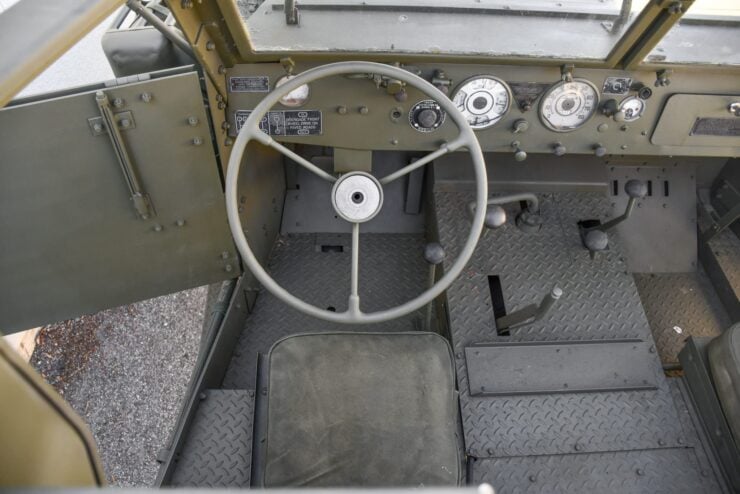

The 1943 White M2 Half-Track Shown Here
The White M2 Half-Track you see here was built right around the middle of the U.S. involvement in World War II, in 1943.
It’s finished in the standard army green over tan canvas upholstery and it remains in original condition throughout including the front winch, fold down window armor, and the rooftop machine gun turret with a (non-functioning) .50 caliber M2 Browning heavy machine gun fitted.
This example of the M2 is fitted with 8.25-20 Power King military-style tires on 20″ multi-piece steel wheels up front, with rubber-coated steel treads fitted in the rear. Brakes are hydraulically assisted drums and it rides on leaf springs up front with vertical volute springs in the rear.
In the cockpit you’ll find a predictably spartan interior, with diamond-plate steel floors and body-colored sheet metal. Simple canvas-covered seats are supplied for the driver and passenger, and there is additional seating in the rear for six more passengers.
A large-diameter steel steering wheel is fitted, necessary as there is no power steering, and the driver sits to the left with an arrange of levers in the central console for changing gear, changing between high and low range, and operating the hand brake.
This White M2 Half-Track is now being offered for sale out of Thousand Oaks, California with a bill of sale on Bring a Trailer. If you’d like to read more about it or register to bid you can visit the listing here.
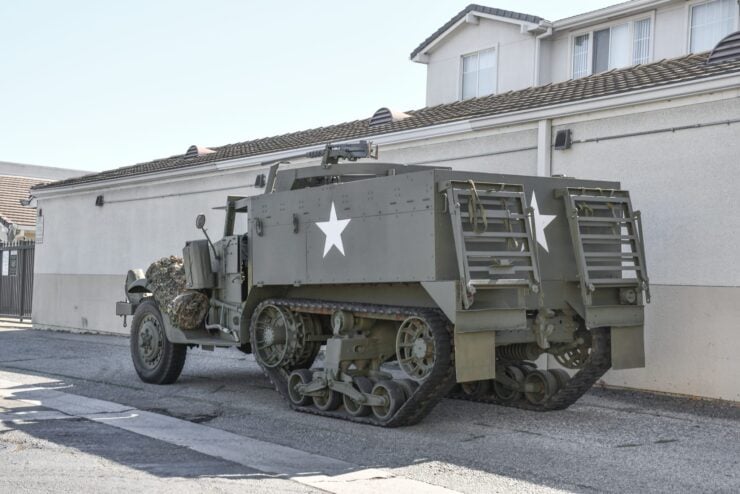
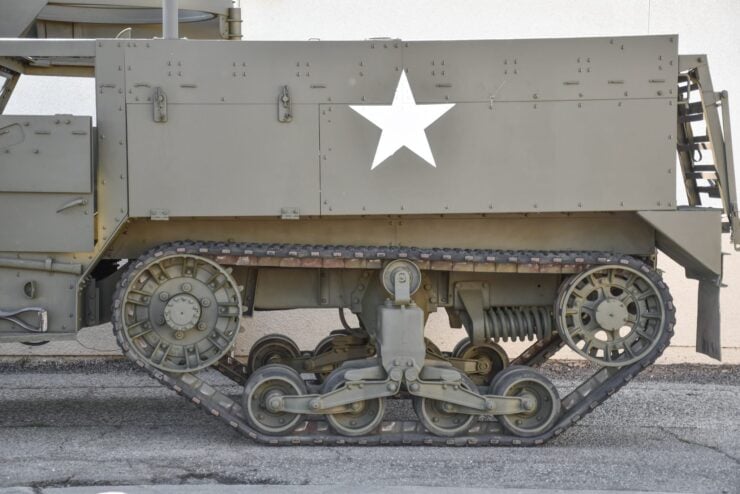
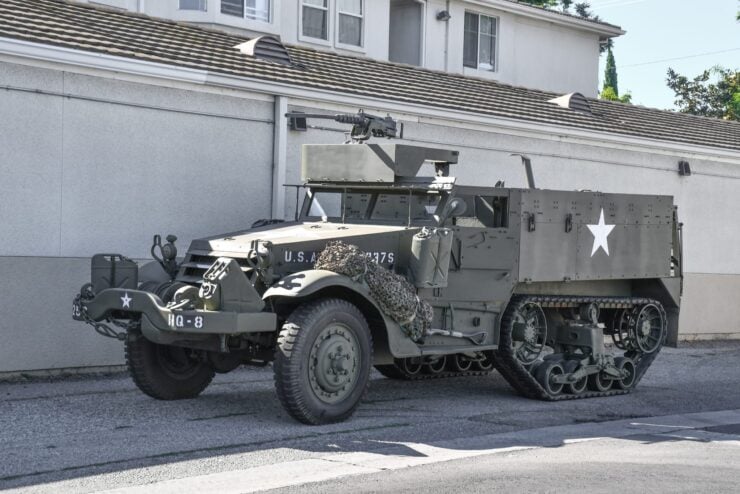
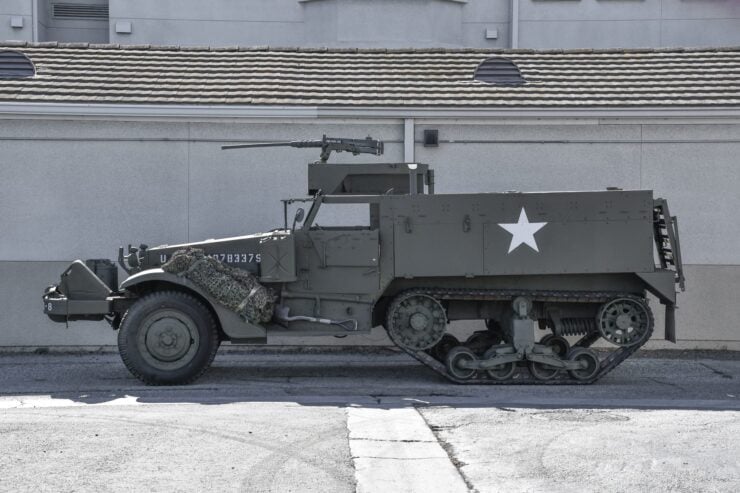

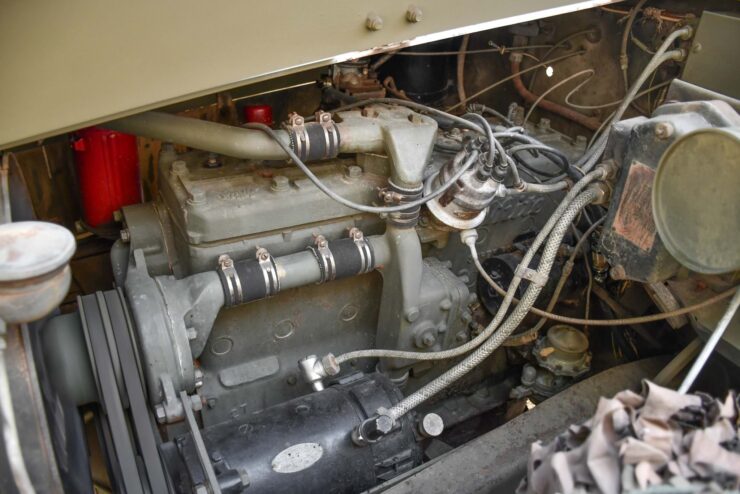
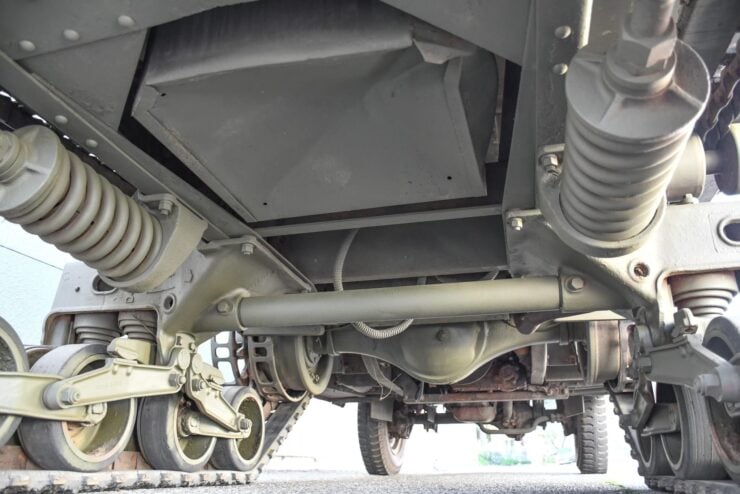
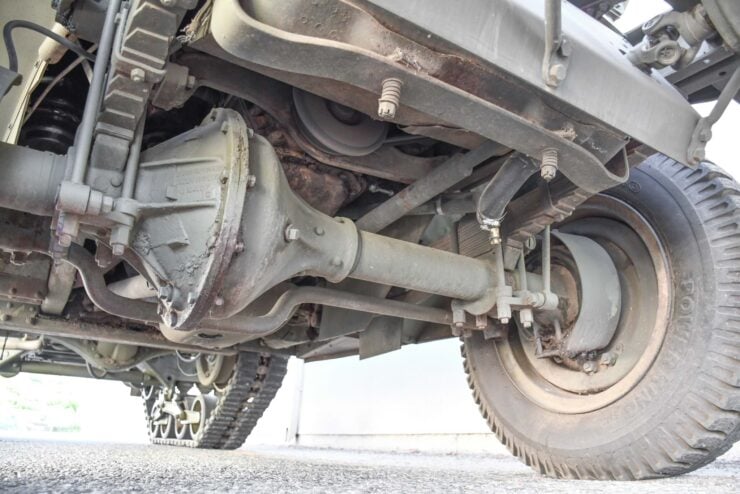
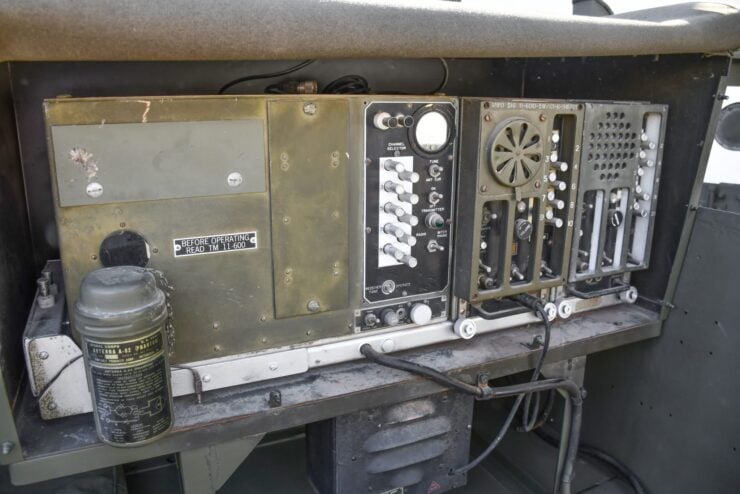
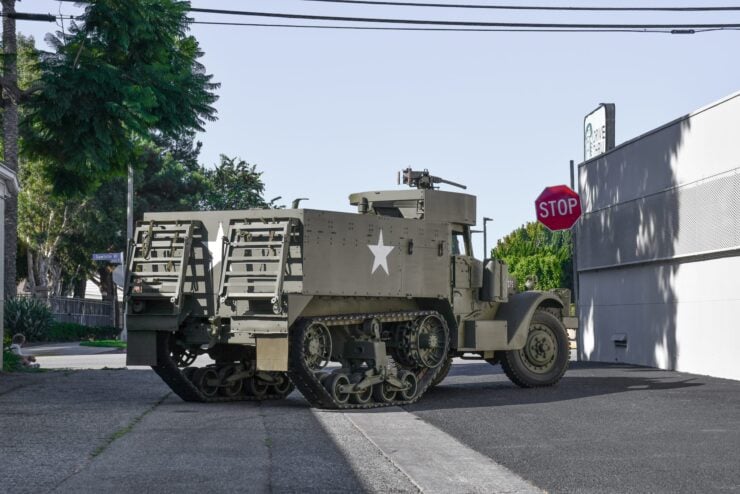
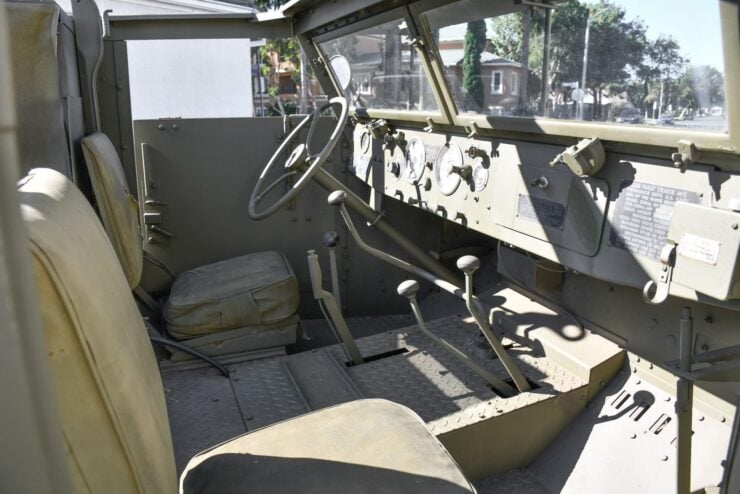
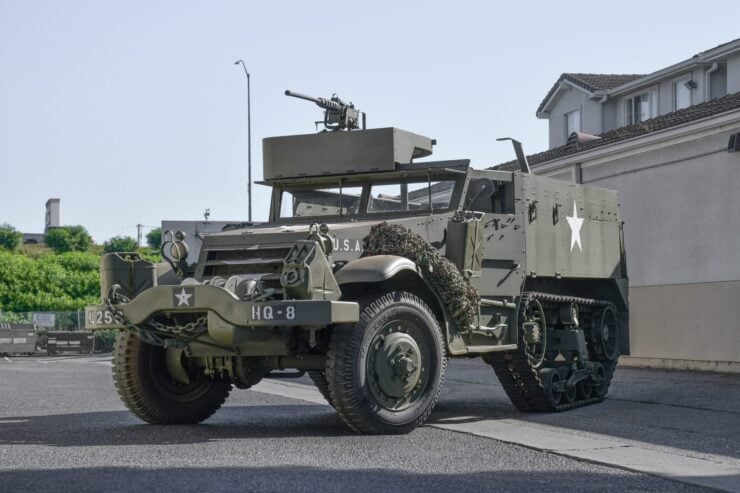
Images courtesy of Bring a Trailer.


